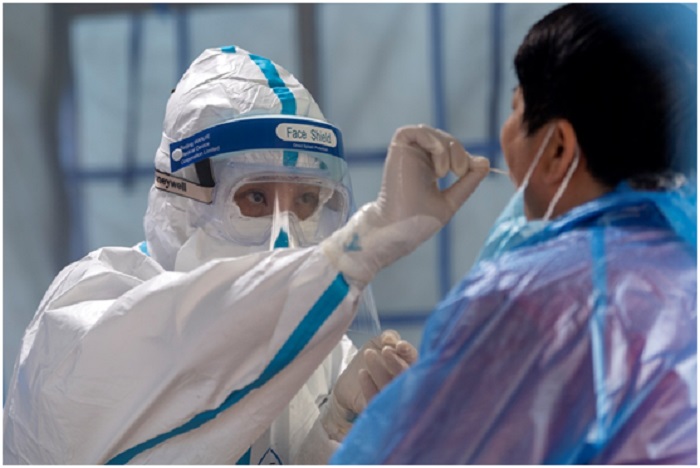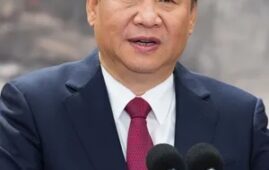



Beijing lowered its COVID-19 emergency response from level II to III starting from July 20, following 40 days of hard work to battle the disease. Taking the most resolute, decisive and rigorous measures and establishing a strict epidemic control network across the city, Beijing has reported no new confirmed cases within 28 days, or two incubation periods.
The second wave of COVID-19 in Beijing, from its start from the Xinfadi wholesale market to final clearing, demonstrated the mechanism, speed and spirit of China.
On June 10, when Beijing had reported zero new domestic cases for 56 consecutive days, a man surnamed Tang from Beijing’s Xicheng district went to the fever clinic at Beijing’s Xuanwu Hospital.
Tang’s sample for nucleic acid test was soon sent to a testing team of the hospital led by Wang Peichang, director of the hospital’s clinical lab. The positive result unsettled Wang and his colleagues, who have gained rich experiences in the battle against COVID-19. Therefore, they went on for another round of test for verification, and the result was still positive. The test result was soon reported to Beijing’s health authorities by Wang and his colleagues.
The result worried Dou Xiangfeng, an expert from Beijing Center for Disease Prevention and Control who was on his night shift when he was informed of Tang’s case at 1:04 a.m. of June 11. Five hours later, Dou visited Tang in a quarantine ward, together with another doctor surnamed Qiao from the disease prevention and control center of Xicheng district, tough he spend his night sleeplessly, working on the epidemiological report of Tang.
“Screening efforts must be ensured in the places Tang had visited, as well as for those who had physical contact with him in the past 7 days,” Dou noted.
Two hours later, 38 close contacts and 23 screening sites were confirmed, and city-wide screening was launched. Over 100 staff members raced against time to trace the source of the infection. Around 2:00 a.m. of June 12, environmental samples tested positive for the novel coronavirus in Xinfadi wholesale market, and the beef and mutton sections in the basement floor of the market was taken as “epicenter.”
Around the same time, Xinfadi wholesale market was quarantined. Fengtai district, where the market is located, also isolated the high-risk groups in the market. The district authorities, responding to the demand of a site command center, designated quarantine hotels, rented taxis and allocated anti-epidemic materials to relocate the high-risk groups. A total of 916 people were relocated to and quarantined in 5 hotels within 10 hours.
Community-based epidemic prevention and control serves as a bedrock for Beijing to fight the disease. Nearly 100,000 community workers launched “blanket” screening in 3,235 communities and 3,876 administrative villages in Beijing, and all close contacts were quarantined at home for observation. The community workers were grouped to screen different neighborhoods, communities, residential complexes and individual buildings, and adopted tailored quarantine measures if needed.
The rapid growing capability of Beijing’s nucleic acid testing has become a legend in epidemic response. The city launched massive testing that covered over 12 million people, and around 52 percent of the confirmed cases were screened by testing. Nucleic acid testing played an important role in detecting the source of infection, cutting the chain of infection and stopping the spread of the virus.
The centralized admission of patients and allocation of medical resources, as well as individualized treatment plans that combined traditional Chinese medicine and western medicine, were major highlights of Beijing’s efforts to fight the second wave of the novel coronavirus. More importantly, no death occurred this time in Beijing.
On June 16, Beijing raised its COVID-19 emergency response to level II, and over 100 medical workers from 18 hospitals in the city went to Beijing Ditan Hospital for assistance. Du Bin, Tong Zhaohui, Jiang Li and other experts known for their outstanding performance in Wuhan, once again stepped onto the frontline to save critical patients.
Beijing launched a 24-hour hotline to respond to the demand of citizens, and a press conference was scheduled at 4:00 p.m. every day and broadcasted by both central and local media.
On July 19, the 157th press conference announced to lower Beijing’s COVID-19 emergency response from level II to level III. The message moved many attending journalists to tears who experienced the hard-won success of the painstaking efforts made in the past 40 days.
A draft version of emergency regulations for public health emergencies were submitted to the 23rd meeting of the 15th Standing Committee of Beijing Municipal People’s Congress for deliberation on July 28, as an effort of the city to formalize the effective measures it explored its COVID-19 response. Meanwhile, the city’s leading group for COVID-19 prevention and control stressed that it’s not yet the time for celebration, as Beijing’s epidemic response is still underway.


Cooperation between China and Nigeria had.



Nigerian government has urged trainees of.



Minister of State for Foreign Affairs,.


The Nigerian Government has congratulated the.


The Humanitarian Service Diamond Awards has.
A Chinese Company, Inner Galaxy Steel.


The Programme Coordinator, Regulatory, Compliance and.


A Non-Governmental Organization (NGO), Committee for.
The Trustfund Pensions Limited has chided.


The House of Representatives Committee on.
Leave a Comment